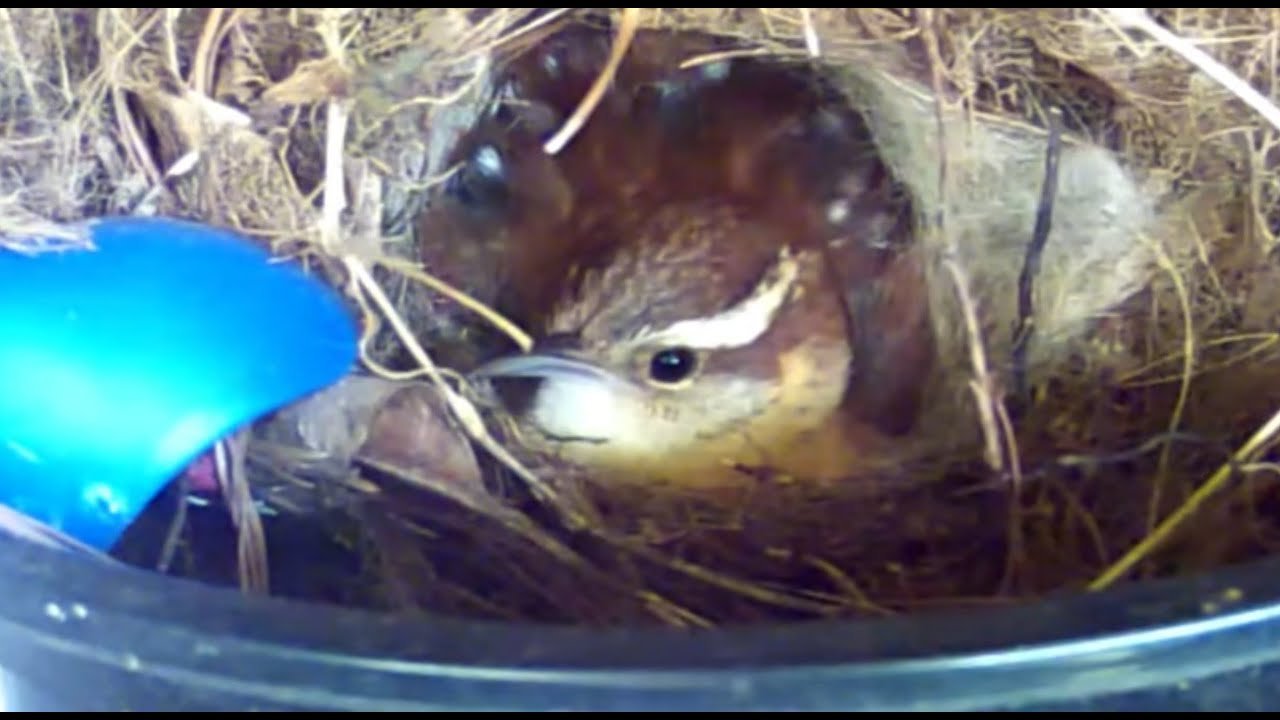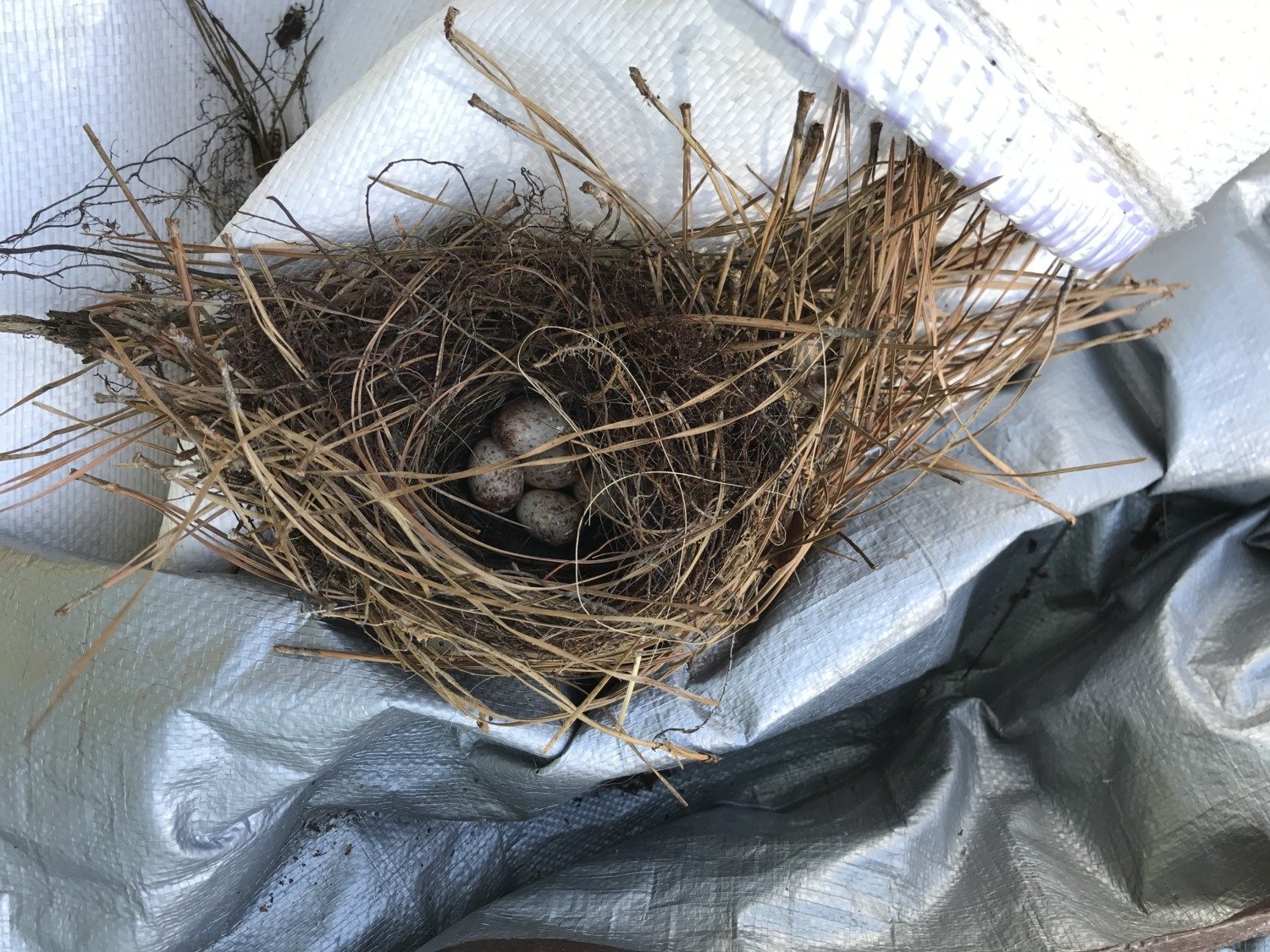Carolina Wren (Thryothorus ludovicianus)
Carolina Wren by Suzanne Thompson
Often heard before it is seen, the Carolina Wren may have the loudest voice in the woods. It is the largest and reddest wren in eastern North America. It is a rich, red-brown above, with a white chin, buffy underparts, and a conspicuous white stripe over the eye. Its beak is long and slightly downcurved and it cocks its tail in typical wren fashion. Carolina Wrens are year-round residents of the Mid-Atlantic. Pairs sometimes stay together all year. Males often sing, even in bad weather, throughout the year. Songs are varied, but the most common song sounds like tea-kettle, tea-kettle.
To learn more about ID, range, breeding, and voice, visit Cornell’s All About Birds
| What Carolina Wrens Need | How Can We Help |
|---|---|
| Food and Water: Carolina Wrens have a varied diet, mostly arthropods such as stink bugs, caterpillars, moths, spiders, cockroaches and eggs. Juvenile skinks, tree frogs, berries, and seeds complete the menu. They come to bird feeders for suet, mealworms, seed. |
|
| Breeding: Nests are built in tree cavities such as old woodpecker holes, or in upturned tree roots or the crotch of a tree. Carolina Wrens often choose strange places to build, such as a garage shelf, flowerpot, mailbox, old boot or pocket of an old coat. The nest is a bulky mass of grasses, weed stalks, and innter bark and leaves with a lining of feathers, moss, hair and fine grasses, usually built three to six feet above the ground. Males and females mate for life, and both build the nest and care for young. |
|
| Shelter: Birds seek shelter in wood and brush piles, and in dense shrubbery in residential yards and gardens. They do not migrate, so are vulnerable to cold snaps in winter. When it gets cold, they will sometimes roost on porches near a warm chimney, out of the wind. |
|
| Other: Carolina Wrens visit birdbaths to drink or bathe. |
|
Know your Wrens
You may have Carolina Wrens and House Wrens in your yard. Here are some tips to tell the difference.
Check out Carolina Wren presence near you:
Find sightings using eBird Data: Narrow the view by entering your county in the “DATA FOR:” filter




